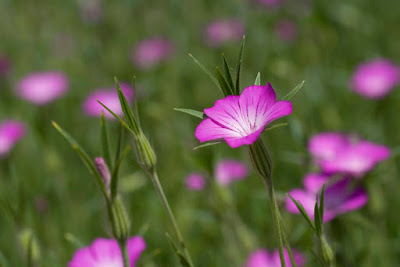!
! Open for your submissions tomorrow Sunday 18th at 7:00 PM (CEST) !!
Dear Haijin, visitors and travelers,
Welcome at this delayed weekend meditation. My apologies (again) for being late I hadn't time enough to publish this weekend meditation earlier.
This weekend I love to challenge you to create a Japanese long poem, or Choka. Let me tell you a little bit more about the Choka.
The choka can be of almost any length, because its form depends on alternating phrases (or lines) containing either seven of five sound units (onji). The end of the poem is signaled by two lines of seven sounds. So the form is five/seven, five/seven, five seven, .... , seven/seven.
This was the most popular form of poetry in the 9th century as indicated by the large number of works in the celebrated anthology
Man'yoshu (The Collection of Ten Thousand Leaves). This anthology of anthologies contained 260 choka and 4200 tanka.
 |
| Kakinomoto no Hitomaru |
The poet
Kakinomoto no Hitomaro, who composed most of his work in the last decade of the 7th century, took the choka to its highest lyrical point with his finesse in the use of ritual language.
The connection to tanka is evidenced by the envoy or hanka - a tanka-like poem attached at the end of the choka. Occasionally more than one envoy will close the choka. There have been a few efforts to revivie the form over the intervening centuries, but the form has failed to gain any popularity in Japan, and even less has been accomplished in English. (Based on Jane Reichhold's "Writing and Enjoying Haiku")
Here is an example of a choka from the Man'yoshu (no. 802):
The briefest chōka documented is Man'yōshū no. 802, which is of a pattern 5-7 5-7 5-7 5-7-7. It was composed in the Nara period and goes:
When I eat melons
My children come to my mind;
When I eat chestnuts
The longing is even worse.
Where do they come from,
Flickering before my eyes.
Making me helpless
Endlessly night after night.
Not letting me sleep in peace?
(envoy or hanka)
What are they to me,
Silver, or gold, or jewels?
How could they ever
Equal the greater treasure
That is a child? They cannot.
© Yamanoue no Okura (Tr. Edwin Cranston)
I once wrote a choka (and published it on my personal weblog), but it isn't really my "cup of tea", but I love to share it here with you all:
the cooing of pigeons
resonates through the gray streets –
ah! that summer rain
refreshes the dried out earth
filling its scars
the perfume of earth tickles
my nostrils
after the hot summer days
I dance in the rain
naked on the top of the hills
I feel free at last
nature around me comes to life
field flowers bloom
I see their beautiful colors
the perfume of Honeysuckle
ah! that summer rain
the perfume of the moist soil
tickles my senses
I lay down, naked in her arms
surrounded by Honeysuckle
© Chèvrefeuille
It's a very nice form of Japanese poetry, but as I said above not "my cup of tea", but maybe it'is your "cup of tea".
PS. You can choose your own theme.
This weekend meditation is open for your submissions next Sunday August 18th at 7:00 PM (CEST) and will remain open until August 25th at noon (CEST). Have a wonderful weekend ... or maybe I have to say "have a wonderful Sunday".































